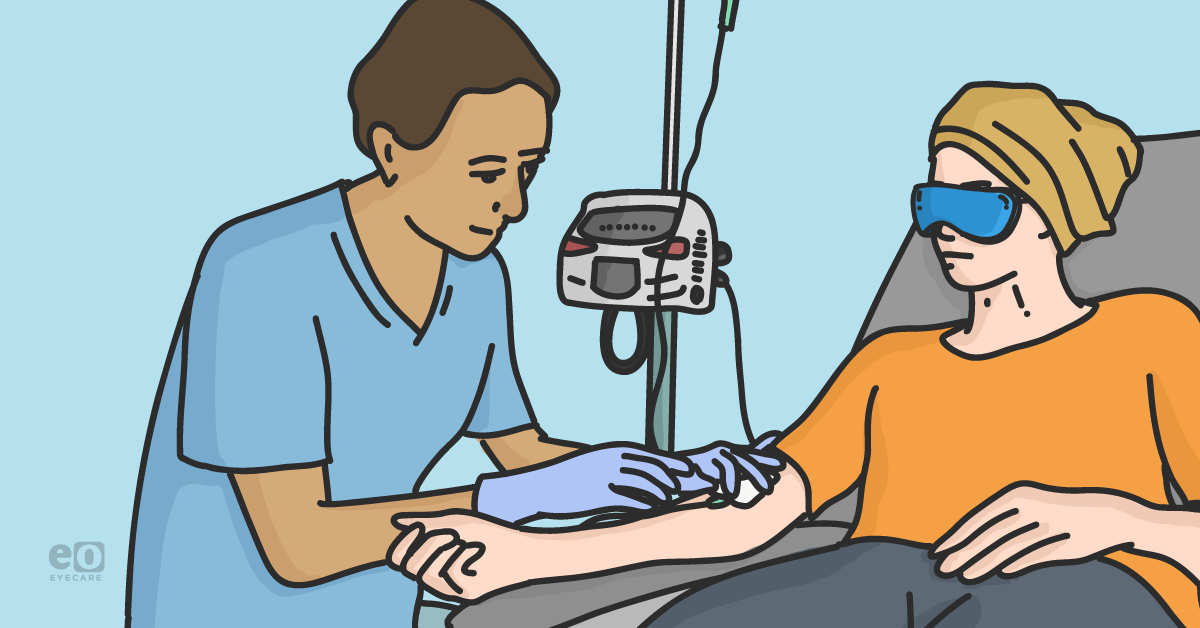Optometrists are accustomed to monitoring patients on high-risk medications for
adverse ocular effects. In September 2021, the FDA approved a new cancer drug,
Tivdak, which causes ocular side effects in 60% of patients.
1 Oncologists prescribe this drug for adult patients with metastatic cervical cancer who progress on or after chemotherapy.
Background
The FDA approved Tivdak under the
Accelerated Approval Program based on a positive tumor response rate and the durability of therapy in the
innovaTV 204 trial. Continued use and approval of the drug may be subject to change based on the results of this ongoing study.
The medication is administered via intravenous infusion every 3 weeks until disease progression or unacceptable systemic toxicity is noted. The most common cancer being treated in the study was squamous cell carcinoma at 68%, followed by adenocarcinoma at 27%.1
The box warning for Tivdak requires an
eye exam by an eyecare provider before starting treatment and as clinically indicated throughout the course of treatment. Patients are instructed to schedule with either an optometrist or an ophthalmologist, as both are trained to perform the needed examination.
Most oncologists likely do not interact with optometrists frequently and may not be aware of our
medical education and clinical skill set. With the recent approval of Tivdak, there is an opportunity to reach out to local oncologists and offer your practice as a referral location for monitoring patients on this medication.
Common ocular complications and management
Conjunctival adverse reactions occur in 37% of patients.
1 The side effects range from mild conjunctivitis, conjunctival abrasion,
hyperemia, and hemorrhage to more severe conjunctival scarring and symblepharon. Most of these conditions are managed with palliative measures.
Symblepharon is the most concerning side effect in this category, and the medication is discontinued immediately with any signs of conjunctival scarring. If conjunctival ulceration is noted, the next dose of Tivdak is withheld until resolution. The medication is discontinued if a second occurrence of ulceration occurs.
Treating symptoms of conjunctivitis
The package insert states that
grade 1 conjunctivitis can be monitored. Grade 2 initial and subsequent occurrence calls for withholding Tivdak until improvement to grade 1 or better. The medication is permanently discontinued if there is a third occurrence of grade 2 conjunctivitis or grade 3 or 4.
Figures 1 and 2 demonstrate grade 3 conjunctivitis with diffuse hyperemia in a patient undergoing Tivdak treatment.
Figure 1, provided by Elizabeth Davis, OD.
Figure 2, provided by Elizabeth Davis, OD.
Treating symptoms of dry eye
Dry eye occurs in 29% of patients using Tivdak, including aqueous deficiency and increased lacrimation. Given the frequency of
dry eye in routine practice, most of us will already have a treatment plan in place to manage this condition.
Instillation of vital dyes to determine the severity and type of dry eye is necessary for treating these patients. The use of
artificial tears, immune-modulating eye drops, anti-inflammatories, and/or punctal plugs are all mainstays of
dry eye management.
Treating symptoms of corneal adverse reactions
Corneal adverse reactions occur in 21% of patients, including keratitis, punctate keratitis, ulcerative keratitis, and
corneal erosion. The use of artificial tears, and other
dry eye treatments, is crucial in managing these patients.
In the case of ulcerative keratitis, antibiotic drops and ointments are required with careful monitoring. Corneal erosions often benefit from regular use of
Muro 128 ointment and/or eye drops.
Amniotic membranes also play a role in helping these immunocompromised patients with corneal defects.
The package insert states that patients can be monitored if superficial punctate keratitis (SPK) is noted. However, if confluent SPK occurs, the medication is withheld until the
cornea heals. The medication is permanently discontinued if there is a second occurrence of confluent SPK.
Treating symptoms of periorbital adverse reactions
Periorbital adverse reactions occur in 16% of patients, including
blepharitis,
meibomian gland dysfunction, entropion, trichiasis, and
chalazion. Eyelid scrubs, warm compresses, antibiotic management of hordeolum, and chalazion should all be recommended as needed. Conjunctival scarring can cause entropion and trichiasis, so the removal of bothersome or abrading eyelashes and consistent lubrication of the globe with ointments and artificial tears are warranted.
Of those who experienced ocular reactions, 55% had complete resolution, and 30% had partial improvement from their last follow-up in the clinical trial. Partial improvement was described as improving by at least one grade in severity.
The median time of onset of
ocular side effects was 1 to 2 months from the beginning of treatment. The majority of adverse reactions were grade 1 or 2 in severity, with only 3% of adverse reactions falling into grade 3. There were no grade 4 reactions noted in the study.
1Contraindications and treatment procedures for Tivdak infusions
Contraindications for receiving Tivdak infusions include
active ocular surface disease, any history of cicatricial conjunctivitis, or Stevens-Johnson Syndrome.
1 The patient’s oncologist needs to be made aware of any findings at the initial exam that would predispose the patient to adverse reactions or disqualify them from receiving treatment.
After their baseline exam and before starting infusions, patients should be prescribed topical
corticosteroid eye drops. These will be used before the infusion, immediately following infusion, and for the following 2 to 3 days. A topical vasoconstrictor, such as phenylephrine, is also used directly prior to each infusion.
2 Oncologists and their staff are instructed to use cold packs on patients’ eyes for the length of the IV transmission.
Contact lens use should be discontinued before beginning treatment.
1Conclusion
Tivdak is a potentially life-extending medication. As optometrists, we play a crucial role in keeping these patients comfortable and safe throughout their treatment. Don’t miss this opportunity to educate patients (and the medical community) on our clinical skill set and knowledge base. This is a great way to
provide quality eyecare for your patients, network with oncologists, and
further grow your practice.
